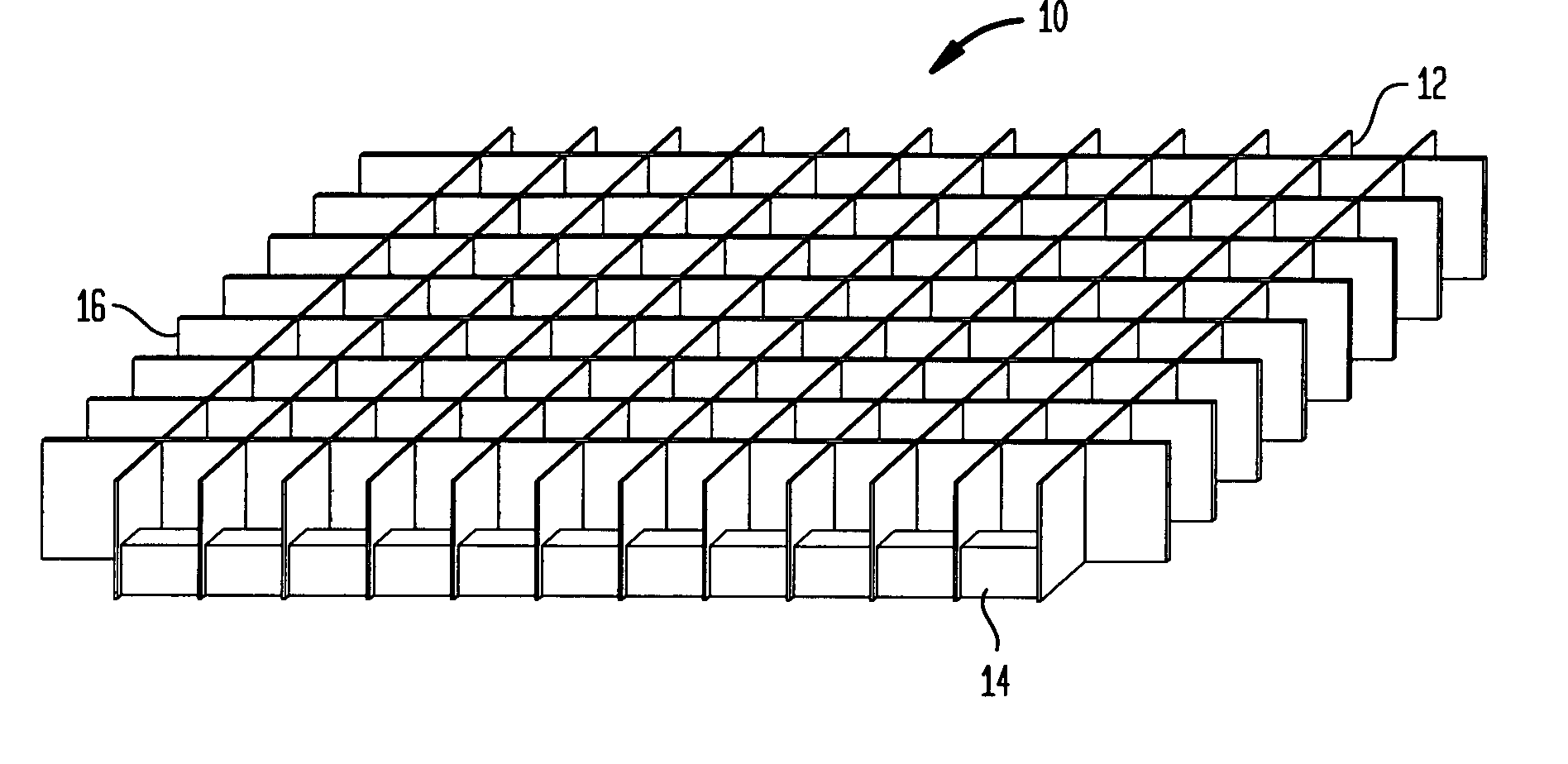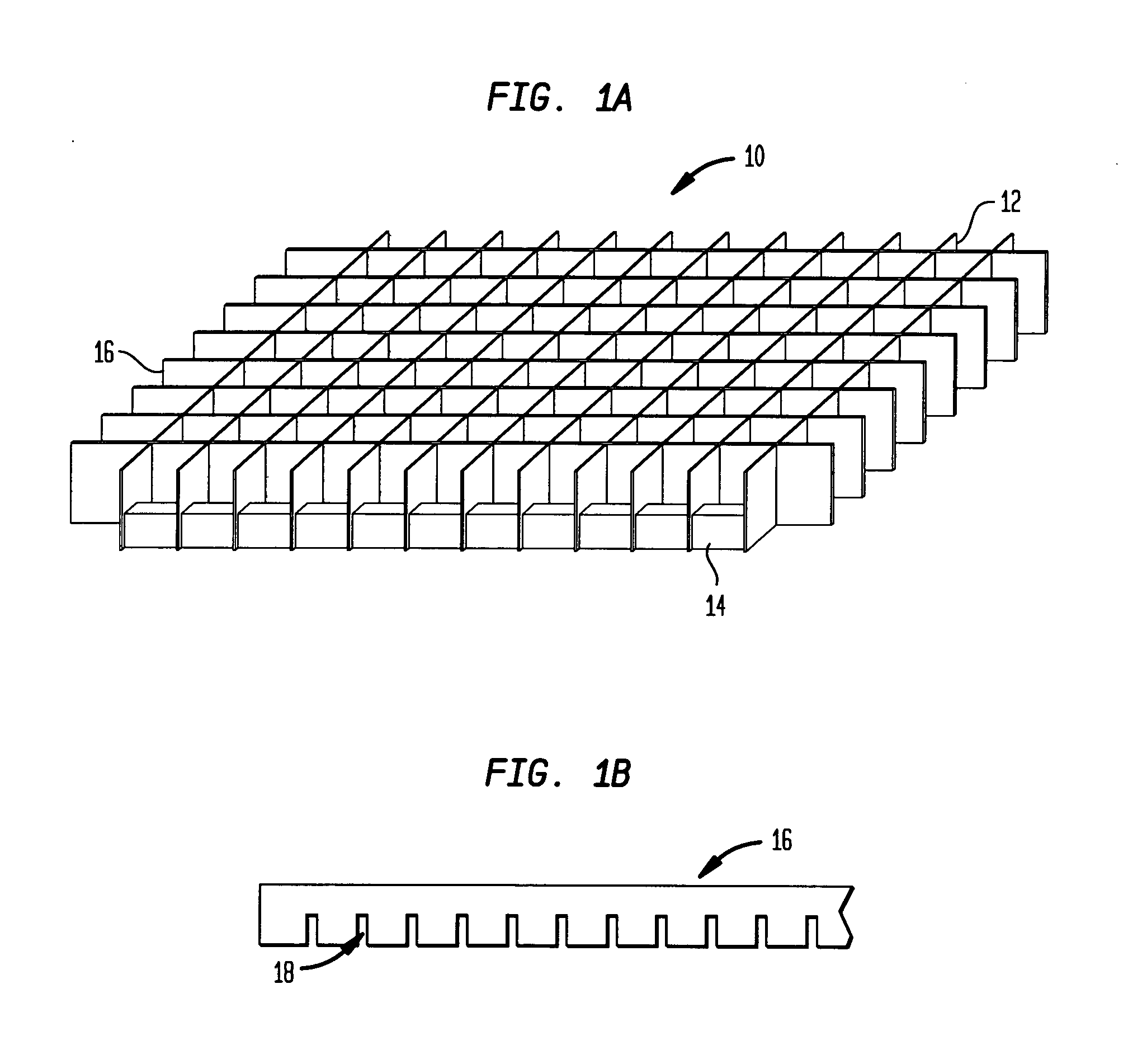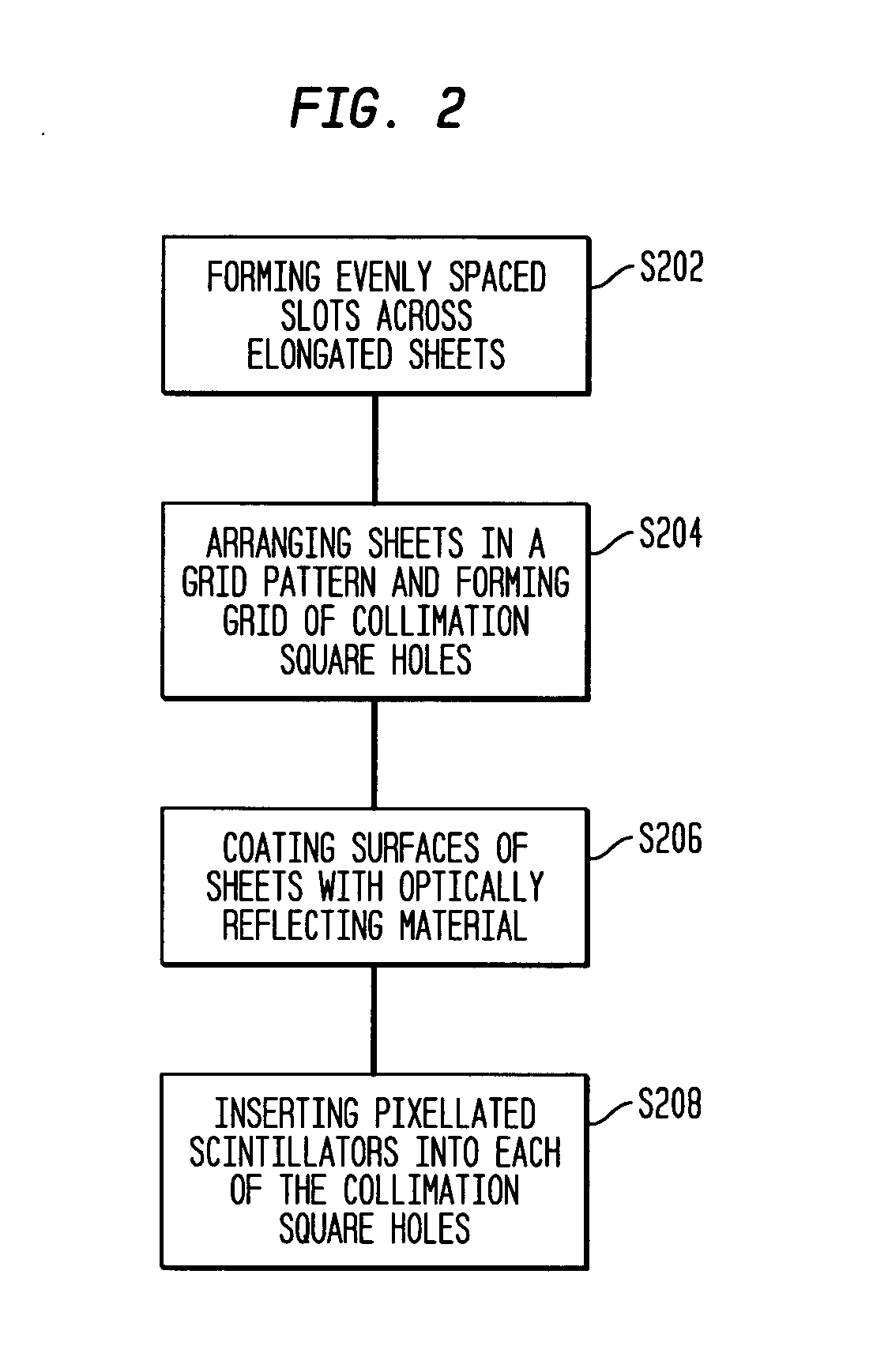Registered collimator device for nuclear imaging camera and method of forming the same
a nuclear imaging and registered technology, applied in the field of nuclear medicine, can solve the problems of difficult to machine thin septa and maintain uniform thickness, labor-intensive machining and drilling of registered square holes from blocks of lead or tungsten, and waste of materials
- Summary
- Abstract
- Description
- Claims
- Application Information
AI Technical Summary
Benefits of technology
Problems solved by technology
Method used
Image
Examples
Embodiment Construction
[0022] In the following detailed description of the preferred embodiment, reference is made to the accompanying drawings which form a part hereof and in which is shown by way of illustrating a specific embodiment in which the invention may be practiced. This embodiment is described in sufficient detail to enable those skilled in the art to practice the invention, and it is to be understood that other embodiments may be utilized and that structural or logical changes may be made without departing from the scope of the present invention. The following detailed description is, therefore, not to be taken in a limiting sense, and the scope of the present invention is defined by the appended claims.
[0023]FIG. 1A schematically shows a collimator device according to an exemplary embodiment of the present invention. Referring to FIG. 1A, according to one preferred embodiment of the invention, a collimator device 10 for a nuclear imaging camera comprises a grid of collimation square holes 12...
PUM
 Login to View More
Login to View More Abstract
Description
Claims
Application Information
 Login to View More
Login to View More - R&D
- Intellectual Property
- Life Sciences
- Materials
- Tech Scout
- Unparalleled Data Quality
- Higher Quality Content
- 60% Fewer Hallucinations
Browse by: Latest US Patents, China's latest patents, Technical Efficacy Thesaurus, Application Domain, Technology Topic, Popular Technical Reports.
© 2025 PatSnap. All rights reserved.Legal|Privacy policy|Modern Slavery Act Transparency Statement|Sitemap|About US| Contact US: help@patsnap.com



